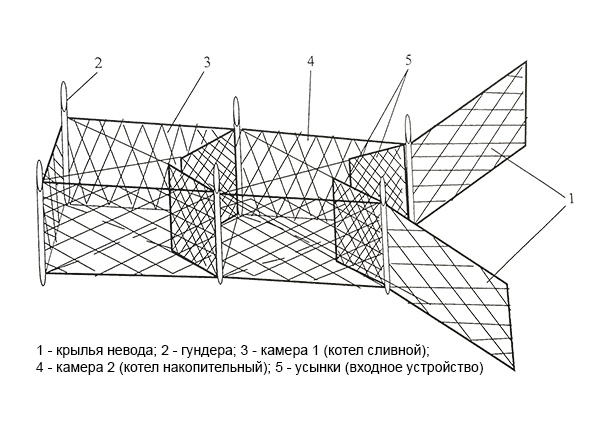Have any questions?
Leave a message and we will answer you:
Fyke Nets
Fyke nets can be used for inventory surveys.
Fyke nets are essentially a type of cylindrical fish trap which contain a series of funnel-shaped openings which make it easy for fish to enter the trap but very difficult to for them to make their way out. One or more vertical sections of netting, called leaders, extend from the mouth of the fyke net and guide swimming fish into the net. Fyke nets are considered a type of passive sampling gear because they rely on fish to willingly encounter and enter the net.
Fuke nets can be used to sample freshwater fish in a wide range of environments including lakes, wetlands, rivers and streams.
The efficiency and selectivity of fyke nets is influenced by the probability that fish will encounter, enter and be retained within the net until it is retrieved. Fyke net catches tend to be biased towards mobile bottom-dwelling species but a wide range of species can be caught when they are set in shallow water. Fyke nets are highly effective for capturing freshwater eels, particularly when baited.
Unlike with gill nets, most fish can be released alive after being captured in fyke nets and the capture of non-target species, such as diving birds, is relatively rare. Fyke nets can also be set amongst complex habitat including dense beds of aquatic vegetation. Predation within fyke nets, particularly when baited, can be a significant issue for the survival of captured fish and can interfere with the collection of accurate data.
The capture efficiency of fyke nets is influenced by a number of net characteristics including mesh size, net dimensions, and the size of the mouth and funnel openings. Standardization of sampling gear within a survey or monitoring program is therefore important for obtaining relative abundance data that can be compared spatially and temporally. The type of fyke net selected for use in a survey should be determined by the survey objectives but where possible should be standardized with those used in other surveys with which the data may be compared.
Fuke net schema
The standard fyke net design consists of a cylinder of netting wrapped around a series of hoops to create a trap. Fish enter through the mouth of the trap and are retained by a series of funnel-shaped throats. One or more leaders (or wings) are attached to the mouth and are used to direct fish into the fyke net. Leaders typically consist of a mesh at least as fine as the trap and have a float-line at the top and lead-line at the bottom.

Advantages of fyke netting:
- Can be relatively easily set in complex habitat types such as dense aquatic vegetation or amongst coarse woody debris. In this respect fyke nets are better than gill nets but not as good as minnow traps
- Is less selective for fish species and sizes than gill nets or minnow traps. However, the size of mesh and funnel openings will determine the minimum and maximum sizes of fish caught.
- Large net and capture capacity, which collapses to small, flat, compact size.
- Results in far less fish mortality and injury compared with gill nets and most fish can be released.
- Presents less risk to diving birds than gill nets.
- Is a highly efficient method for sampling eel species, particularly if baited.
- Is effective for catching fish during migratory movements. Double-winged fykes can also be used to determine the direction of movement; for example, between a river and associated floodplain wetlands.
Disadvantages of fyke netting:
- They can be difficult to set in deep water or at sites with uneven or steeply sloping substrates.
- Predation can occur inside the nets and this is likely to be a significant issue with eels in New Zealand. Predation can affect recorded capture rates of smaller fish which are either eaten or actively avoid entering nets containing predators). Predation will also influence the contents of predators’ stomachs and this should be taken into account if fyke net catches are used in diet studies.
- They can be difficult to set in strong currents as they tend to accumulate debris or will not set properly. However, fyke netting is more conducive to sampling in currents than gill nets.
- There is a bias towards cover-seeking mobile species, benthic species and larger fish species.
- Catch rates are generally lower than those for gill nets.
- Catch rate variability is often high, which means that relatively large numbers of sets are required to detect changes in relative abundance.
